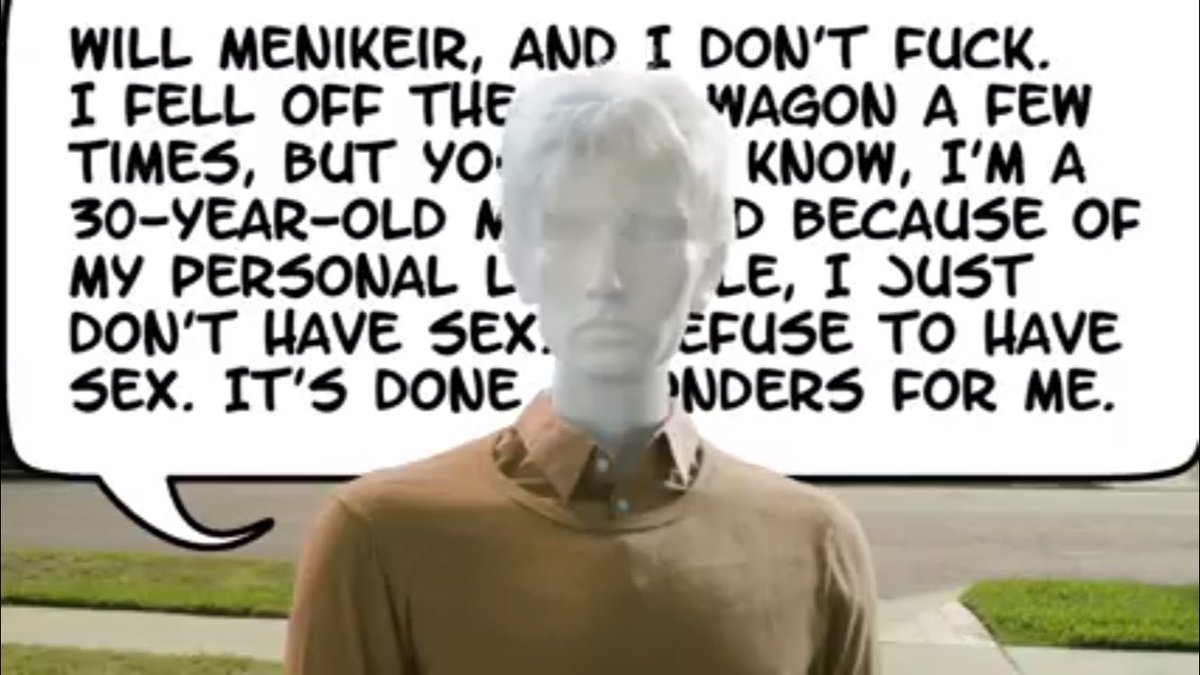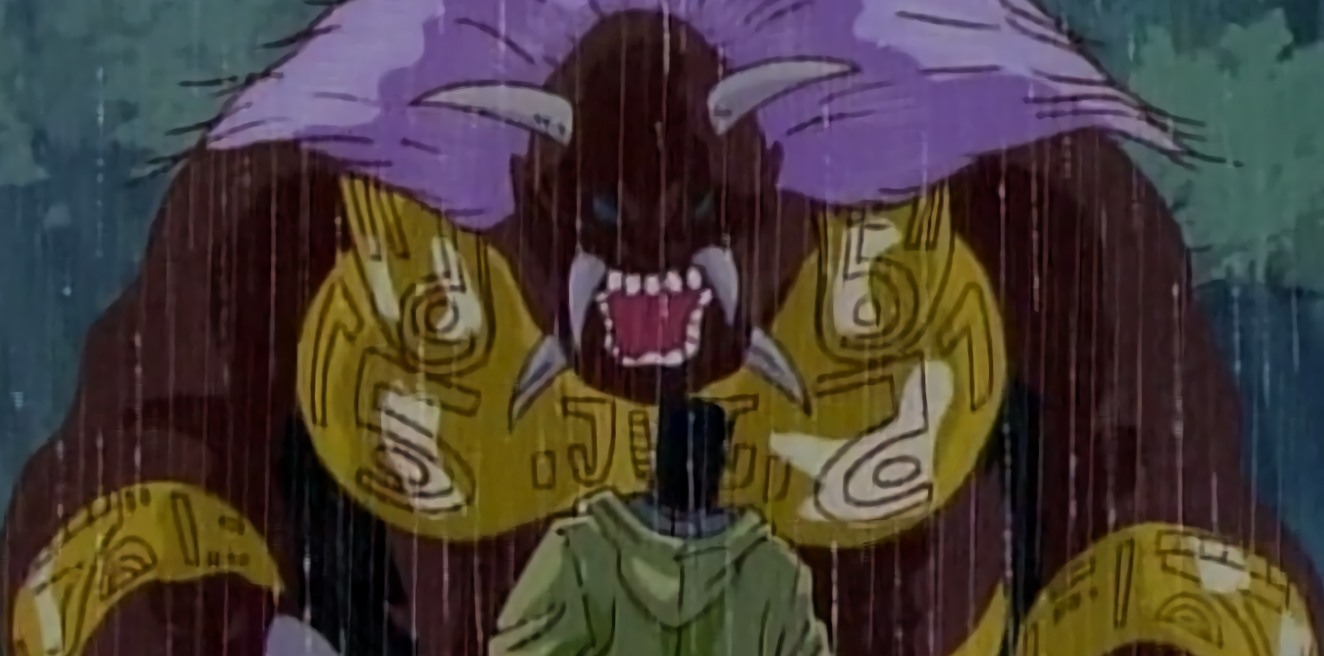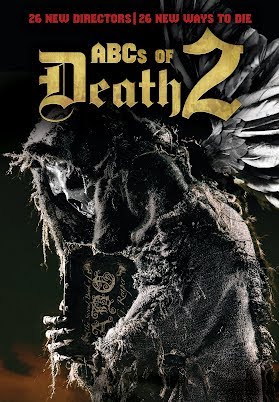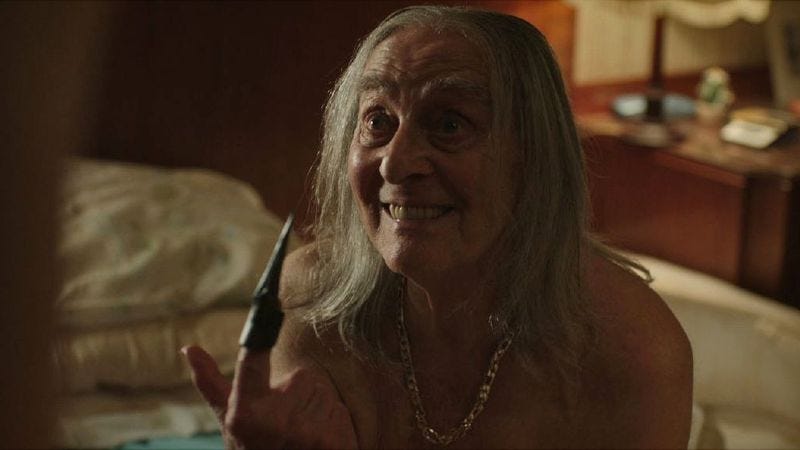Director: Chester Novell Turner
Screenplay: Chester Novell Turner
Cast: [Bookend Story] Shirley L.
Jones (as the Mother); John W. Jones as Daryl; Richard Tanguy as 1st Police
Officer; Dan Kugler as 2nd Police Officer; Patrick D. Tanguy as Bobby's Voice; Jamar
E. Bankhead as Bobby
[Cast of Baloney Sandwich
segment] W.J. Rider, Doug Daverport, Johnnie Tanguy, Chris Calloway, Kim
Nichols, Tammy Nichols, Jeff Miza and Ronda Rider
[Cast of Brothers segment] Keefe
L. Turner as Ted Johnson; Larry Jones as
Oscar; Lawrence R. Jones as Moby; William Jones as Fred Johnson; Tommy L.
Miller as the Man in Coffin
Synopsis: A mother (Shirley
L. Jones) begins to read stories to her ghost child. One is of a bizarre
dinner ritual of a white Southern family, and how eventually one of the sons
snaps. The other is of an African American man taking revenge on his recently
deceased brother. The mother's own issues with her husband, however, come forth.

That
Tales from the Quadead Zone as a title suggests four stories,
because of "Quadead" represents four, but only has two and a bookend
it itself the perfect introduction to this off-the-beaten-tracks production.
Regardless of my ultimate opinion on the hour long video, which I will get
into, the story of
Chester Novell Turner
is fascinating, a figure who deserves to be included in Shot-On-Video Cinema's encyclopaedia
entry, with a portrait of him among a few others. An African American man who
desired to make films, in love with cinema and the likes of the
Twilight Zone, he had access to video
recording technology as many did back in the eighties, alongside the advantage
that, as that new technology also needed product for the VHS players, he could have
his distributed as part of the constant need for new product.
Unfortunately his career (as of yet)
consists of only two films. Black Devil
Doll From Hell (1984) was taken away from his by distributors who re-edited
it against his will, whilst Tales from
the Quadead Zone itself was a self released title. Quadead in particular had such a low print run of his own
distributed tapes that an original copy was on sale on eBay for $700, that same copy sold later for $1,300. The story of
how he was tracked down by Massacre
Video founder Louis Justin is
itself a wonderful ending, the fear that he had passed away unknown thankfully
not the case, found by Justin and
gaining a fan base who he embraced with happiness as much as that fan base to
him, alongside the fact his films were now known in cult circles and available
to actually see.
And noticeably, when there is an
inherent concern that the fan base for SOV (shot-on-video) films are predominantly
white, there is thankfully no sense of irony or so-bad-it's-good attitude for a
black independent filmmaker who shot in his native Chicago. These films are
notoriously odd, but the appreciation for Turner
even went as far as a New York Times
article explaining his history and the search to bring back his two films for
public consumption. Even if Quadead Zone
is a peculiar experience with its technical limitations and unconventional
personality, none of this reappraisal has a problematic moral to it in the
slightest, especially as Turner clearly loved the rediscovery and appreciation
of his creations. That we can even see the films is itself meaningful beyond
irony.
With this in mind, Quadead by itself would lose a lot of
its weight without the background detail behind it. Stripped away, it's not the
incredible discovery its growing reputation has, especially when you compare it
to the Canadian shot-on-video film Things
(1989), the zenith of bizarre homemade filmmaking. Instead its curious little no-budget production, built
around three segments where Turner's
ideas for creepy tales are very adult psychodramas rather than monsters and
scares. This contrasts the opening credits - star (and Turner's girlfriend at the time) Shirley L. Jones contributing intentionally comic book haunted
house art, the minimal synth music (by Turner
himself) with high pitch vocals about chills and frights - whilst the film
beyond it belies this set up immensely. Built from local participants and what
he can access, the biggest virtue is not that the film really works even in a
psychotronic way, but that he managed to make a film which touches on themes
more grim and realistic even through the absurd, exaggerated ways.
The first segment is definitely
the strangest both in structure and conclusion, in which a large religious
family gather around a table everyday and have to be the first to eat a
selection of baloney sandwiches, not enough for them all and thus leaving
whoever is the slowest hungry. Even when circumstances reduce the number of
family members at the table, the number of sandwiches will always be less than
enough to feed everyone, leaving this segment to have an intentionally inspired
absurdity to it. In fact, because of this strange but perfect little detail, it's
the best and most memorable segment for myself due to its surrealist nature.
Like the introduction with actress L.
Jones and the ghost child that leads to this segment, you are aware how low
budget the production is. Being shot on videotape produces a sharp contrast to
conventional, higher budget filmmaking. Locals from the region, minimal framing
and camera movement, the border between our everyday lives as the viewer and
the film's only separate now because the eighties is a decade in the past. Onscreen,
eighties computer text explains what happens to the family after one of the
sons snap, with the term "on the hog" repeated more than in any film
I've seen. The story, whilst brisk and crude, is perversely watchable. In fact,
in all seriousness, you could adapt it by itself into an absurdist short, like
a bastard offspring of Jan Němec's A Report on the Party and Guests (1966),
without the political satire but that same closed in world of nonsensical (but
strangely logical) behaviour, the kind of story better if you imagine there
would only be one baloney sandwich even if there were three people at this
table, always infinitely less sandwiches due to a cosmic will outside this
family's grasp.
 |
From https://trashfilmguru.files.wordpress.com
/2013/11/tumblr_lpu59kdogg1qzn0kbo1_500.jpg |
The second segment is where Quadead's quirks really appear. The
story of a man who, unable to kill his older brother because he has already
died, still has the body stolen from the funeral to get his revenge. It
emphasises, whilst scenes can linger on and on beyond what is necessary, and
the audio for the dialogue is difficult to hear at times, that Turner's on the side of dramatic horror
that the likes of his interest in the Twilight
Zone has clearly left a permanent mark on him. Premise wise its eventually
a good one at for the middle of it, even if in terms into a generic undead
revenge tale by the end, as when unable to murder his brother the antagonist's
still going to rob him of his grave by burying him in the cellar. Asking why he
decides to dress the corpse in a clown costume is pointless, especially as
questioning one of the memorable aspects of the entire anthology would mean we wouldn't
have these quirks of Turner's
onscreen. That and who the hell would bring a pitchfork at the bottom of the
cellar to dig an improvised grave. It introduces another of his tricks in terms
of depicting ghosts visibly, using a hazy primary coloured superimposition of
an actor to interesting effect. Less appreciated, even if charming, is
robotising the voices of the dead so you can barely make out dialogue admits the
buzzing, more so when music will play over the dialogue at the same time.
The bookends of the Quadead are the most fascinating in
terms of an actual film. Whilst I prefer the segment with the baloney
sandwiches, the actual meat of the film is with Shirley L. Jones playing a working class mother with a ghost child.
A bookend to this feature's credit with invisibility effects, seats being compressed under a form and one
floating mug, probably more effective and practical than all the CGI used in
the likes of Hollow Man (2000). Even
the ghost's way of speaking to his mother is memorable, where L. Jones's
long hair is blow back from a hair dryer off-screen with ghostly whispers, because
it feels like the most unconventional shampoo commercial you could watch. The
segments with these two characters, before the finale after the stories in-between,
remind me that the SOV cinema (unintentionally) was a violent rebuttal of glamorised
cinematic aesthetic. Whilst it was used to make films like this, the same
technology was also used to film home movies, meaning they eliminated the
barrier of conventional cinema by having normal people in front of the screen
rather than stars, the real decor and furniture of real rooms rather than sets,
a prop book of the tales of the Quadead put together as a Blue Peter project
than a Hollywood production designer. All whilst creating on a medium, VHS,
which is a fraught and fragile material to preserve, fuzz mixing with a
wobbling picture quality at the top and bottom of the screen that becomes hazy
in image.
What you don't expect from said
bookends is a grim ending involving the husband believing she is unstable after
losing their son, a domestic abuse scene which turns uglier, and the bloody
aftermath having a depressing conclusion. Even if it ends with the ghost
superimposition effect and robot ghost voices, somewhat of a happy note, its
sobering with the film's reputation within the crazy, strange world of SOV
films that it concludes with someone committing suicide and a bleak tone. Material
that could happen in a regular drama, even with the ghost child still part of
the narrative, which says a lot about Turner's
choices as director-writer-producer when he could have made gore or monster
film, but instead chooses real life topics with supernatural edges added to
them.
Is Quadead zone abstract? Not really. Calling it weird is in danger of
trivialising Turner in itself, and
bluntly its more appropriate to call Quadead
strange. We blur the lines between "strange" and "weird",
which I admit to having done in writing for these sorts of films, but here the
term strange is apt and the only right choice of word. Something unfamiliar due
to the stylistic choices and limitations involved, not "weird" as that
has always implied something more extreme for me going further than that, the
context something utterly understandable but the method Turner had to make the film, even how the film because a prized
treasure going for insane amounts of money for the original and scarce
videotape, bringing something out of the ordinary to the results. As a
production, I couldn't call it "abstract" as it plays very straightforwardly
with the shot-on-video aesthetic stripping away the potential weird mood
needed. Even my beloved baloney sandwich segment, whilst abstract in premise,
is made pretty conventional in mood because of how its presented.
Abstract Spectrum: Eccentric/Psychotronic/Strange
Abstract Rating (High/Medium/Low/None): None
Personal Opinion:
A fascinating production. It is,
frankly, not the one-off and one-of-a-kind artefact of weirdness it has been
described as. Instead it's a fascinating example of filmmaking on very little
budget, a cultural artfact, which has thankfully gained appreciation in the
21st century.
 |
From http://www.internalbleeding.net/wp-content/uploads/
2008/06/tales-from-the-quadead-zone-3.jpg |


















